Topics 2011
December 2011
Dec. 22, 2011 Updated
T-shirt designs selected for Astronaut Hoshide's ISS expedition!
|
JAXA carried out a print design contest for T-shirts that Astronaut Hoshide will wear during his long stay at the International Space Station (ISS.) As a result of the contest held between August 24 thru September 23, 2011, we received 219 print designs. Of them, 12 were selected. |

|
|---|
December 7, 2011 Updated
Astronaut Furukawa to hold debriefing session after ISS expedition
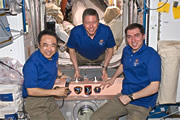 JAXA will hold a post-mission report meeting by the three crewmembers of the 28th/29th expedition to the International Space Station (ISS) including Astronaut Furukawa on January 16 (Mon.), 2012. This debriefing session is titled "Symposium to learn more about Kibo's application and achievements."
JAXA will hold a post-mission report meeting by the three crewmembers of the 28th/29th expedition to the International Space Station (ISS) including Astronaut Furukawa on January 16 (Mon.), 2012. This debriefing session is titled "Symposium to learn more about Kibo's application and achievements."
The astronauts will tell us how they felt during their stay in space and use some images. We also plan to have a report session on experiment results at the Japanese Experiment Module "Kibo"of the ISS, and a panel discussion.
Admission is free, but please make sure to register beforehand to attend the debriefing session.
Date and Time: January 16 (Mon.), 2012 (From 6:00 p.m., Japan Standard Time)
Participants must be high-school students or older
* Registration has been closed.
December 1, 2011 Updated
Merry Christmas from Space! Message to be sent using KIZUNA
 JAXA is offering a Christmas greeting mail service using the KIZUNA’s network this year again. The purpose of this event is to deepen your understanding of the wideband internetworking engineering test and demonstration satellite “KIZUNA.”
JAXA is offering a Christmas greeting mail service using the KIZUNA’s network this year again. The purpose of this event is to deepen your understanding of the wideband internetworking engineering test and demonstration satellite “KIZUNA.”
On Christmas eve, Dec. 24, a message will be sent from space via the KIZUNA, which is flying on a geostationary orbit at an altitude of 36,000 km. You can convey your feelings to your loved ones from space. Why don’t you mail your appreciation to your family, friends and sweethearts on this occasion?
- Registration: December 1 (Thu) thru 21 (Wed) (till 5:00 p.m. on the 21st, Japan Standard Time) 2011
- Message delivery: Dec. 24 (Sat.) 2011 (JST)
November 2011
November 22, 2011 Updated
Welcome back to Earth, Astronaut Furukawa!
 At 11:26 a.m. on Nov. 22 (Tue. Japan Standard Time), the Soyuz spacecraft (27/S/TMA-02M), with Astronaut Furukawa aboard, landed in the Republic of Kazakhstan. Astronaut Furukawa safely came back to Earth after completing his 165-day mission to the International Space Station (ISS) as a 28th/29th expedition crewmember. Since he started his stay at the ISS on June 10, 2011, he has conducted various experiments including an engineering verification of the space medicine test support system and a Marangoni experiment. Thank you very much for your support to his long stay mission.
At 11:26 a.m. on Nov. 22 (Tue. Japan Standard Time), the Soyuz spacecraft (27/S/TMA-02M), with Astronaut Furukawa aboard, landed in the Republic of Kazakhstan. Astronaut Furukawa safely came back to Earth after completing his 165-day mission to the International Space Station (ISS) as a 28th/29th expedition crewmember. Since he started his stay at the ISS on June 10, 2011, he has conducted various experiments including an engineering verification of the space medicine test support system and a Marangoni experiment. Thank you very much for your support to his long stay mission.
November 18, 2011 Updated
Live broadcast of Astronaut Furukawa's return
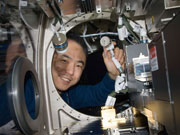 On Nov. 22 (Tue.) Astronaut Satoshi Furukawa will finally come home, completing his long-stay mission at the International Space Station (ISS).
On Nov. 22 (Tue.) Astronaut Satoshi Furukawa will finally come home, completing his long-stay mission at the International Space Station (ISS).
We will broadcast live the Soyuz spacecraft, which he will be aboard, leaving the ISS and landing on the Earth. You can watch the live reports not only through the Internet or on TV but also at JAXA facilities and some public viewing sites all over Japan. Let's welcome Astronaut Furukawa back to Earth!
November 8, 2011 Updated
Date for Astronaut Furukawa to come home decided
 Astronaut Satoshi Furukawa, who is staying at the International Space Station (ISS) for a prolonged period of time will finally fly back to Earth this month. As the Soyuz spacecraft (27S) is getting ready for its return flight, Astronaut Furukawa’s home coming is set for 11:25 a.m. on Nov. 22 (Tue.), 2011 (Japan Standard Time.) JAXA will offer a live broadcast of Soyuz’s separation from the ISS and its landing on Earth.
Astronaut Satoshi Furukawa, who is staying at the International Space Station (ISS) for a prolonged period of time will finally fly back to Earth this month. As the Soyuz spacecraft (27S) is getting ready for its return flight, Astronaut Furukawa’s home coming is set for 11:25 a.m. on Nov. 22 (Tue.), 2011 (Japan Standard Time.) JAXA will offer a live broadcast of Soyuz’s separation from the ISS and its landing on Earth.
November 2, 2011 Updated
Observing flood damage in Thailand and providing information
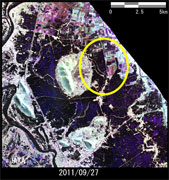 JAXA is providing the Geo-Informatics and Space Technology Development Agency (GISTDA) in Thailand with observation results on flood damage taken by the synthetic aperture radar aboard an aircraft.
JAXA is providing the Geo-Informatics and Space Technology Development Agency (GISTDA) in Thailand with observation results on flood damage taken by the synthetic aperture radar aboard an aircraft.
JAXA also provides the Ministry of Land, Infrastructure, Transport and Tourism, Japan, with quasi-real-time data from a quick report for global precipitation distribution based on data acquired by satellites such as the Tropical Rainfall Measuring Mission (TRMM) and other means.
JAXA continues to offer information to all concerned agencies and organizations under the international cooperation framework.
October 2011
October 24, 2011 Updated
Last thank-you message to DAICHI from Japan Coast Guard
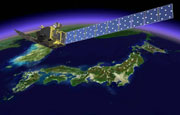 The land observing satellite "DAICHI," which completed its operations in May 2011, had contributed to the Japan Coast Guard (JCG) by providing satellite images of ocean ice for a long time.
The land observing satellite "DAICHI," which completed its operations in May 2011, had contributed to the Japan Coast Guard (JCG) by providing satellite images of ocean ice for a long time.
On Oct. 18, the JCG sent a laser beam as a last message directly to the DAICHI from its Shimosato hydrographic observatory, where they conduct satellite laser ranging. By doing so, they would like to show their appreciation to the satellite. The observatory then received a reflection signal from the DAICHI's reflection prism to confirm that thebeam reached the satellite.
The DAICHI must be very pleased to accept the JCG's gratitude.
October 12, 2011 Updated
Astronaut Furukawa's work at the ISS is progressing smoothly
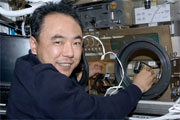 It’s been four months since Astronaut Satoshi Furukawa began staying at the International Space Station (ISS). Since the beginning of October, he has been performing an experiment called “Passages” conducted by the European Space Agency, which examines the impact of the microgravity environment on an astronaut’s physical movement. He also started a medical experiment organized by the Canadian Space Agency, which tests the effects of longterm space flight on cardiovascular conditions. In addition, he carried out a noise condition check inside the ISS using an acoustic measurement device, and water sampling with an analyzer for organic carbon for water quality check.
It’s been four months since Astronaut Satoshi Furukawa began staying at the International Space Station (ISS). Since the beginning of October, he has been performing an experiment called “Passages” conducted by the European Space Agency, which examines the impact of the microgravity environment on an astronaut’s physical movement. He also started a medical experiment organized by the Canadian Space Agency, which tests the effects of longterm space flight on cardiovascular conditions. In addition, he carried out a noise condition check inside the ISS using an acoustic measurement device, and water sampling with an analyzer for organic carbon for water quality check.
Astronaut Furukawa is scheduled to return home on November 22. We are still welcoming support message to him!
September 2011
September 28, 2011 Updated
JAXA autumn open-house events held all over Japan!
 JAXA will hold annual autumn open-house events in our field offices.
JAXA will hold annual autumn open-house events in our field offices.
The first event will be held at the Kakuda Space Center on October 2 followed by the Tsukuba Space Center on Oct. 15, and the Chofu Aerospace Center on Oct. 16. The other facilities will also follow suit later.
Each center prepares for its unique events in addition to conventional ones including a plastic rocket class, space food tasting, and a lecture by an astronaut. Please come and join us with your friends and families.
We are looking forward to welcoming you.
- Oct. 2: Kakuda Space Center
- Oct. 15: Tsukuba Space Center
- Oct. 16: Chofu Aerospace Center
- Oct. 22: Masuda Tracking & Communication Station
- Oct. 29: Okinawa Tracking & Communication Station
- Oct. 30: Uchinoura Space Center
- Nov. 12: Earth Observation Center
September 22, 2011 Updated
'Shizuku' selected as nickname for Global Change Observation Mission 1st - Water (GCOM-W1)
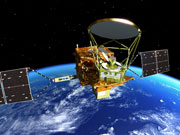 JAXA conducted a nickname contest for about two months for the Global Change Observation Mission 1st – Water (GCOM-W1) satellite, and we received 20,998 applications. Among them, "Shizuku" (meaning a "drop"or a "dew") which was suggested by the largest number of people was selected. The typical reasoning for picking "Shizuku" was that the satellite will observe water circulation, which originated from a "drop" of water that becomes rain, then runs into the ocean, and ultimately evaporates in the air and becomes ice. This explanation gained high points during the selection process as it precisely illustrates the GCOM-W1 mission. JAXA will send a certificate and commemorative present to all of you who proposed the name "Shizuku."
JAXA conducted a nickname contest for about two months for the Global Change Observation Mission 1st – Water (GCOM-W1) satellite, and we received 20,998 applications. Among them, "Shizuku" (meaning a "drop"or a "dew") which was suggested by the largest number of people was selected. The typical reasoning for picking "Shizuku" was that the satellite will observe water circulation, which originated from a "drop" of water that becomes rain, then runs into the ocean, and ultimately evaporates in the air and becomes ice. This explanation gained high points during the selection process as it precisely illustrates the GCOM-W1 mission. JAXA will send a certificate and commemorative present to all of you who proposed the name "Shizuku."
Thank you very much to so many people who join the contest. Please keep your eye on the GCOM-W1 project.
September 7, 2011 Updated
Logo for GPM dual-frequency precipitation radar selected
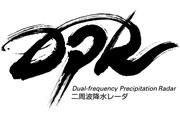 JAXA has decided on the logo mark for the dual-frequency precipitation radar (DPR) aboard the main satellite of the Global Precipitation Measurement (GPM) project.
JAXA has decided on the logo mark for the dual-frequency precipitation radar (DPR) aboard the main satellite of the Global Precipitation Measurement (GPM) project.
As an international program, the GPM project has been led by Japan and the U.S. to observe global precipitation (such as rain and snow). JAXA is developing the DPR with the National Institute of Information and Communications Technology (NICT.)
The DPR, a high-performance precipitation measurement device, will be aboard the GPM main satellite to be launched by the H-IIA launch vehicle. Once it arrives in space, the radar is expected to contribute to compiling a high-precision global precipitation map.
The DPR, which has been tested at the Tsukuba Space Center, will be transported to a NASA facility to be combined with the part developed by NASA.
August 2011
August 19, 2011 Updated
DAICHI offers data for mapping the ice flow of the Antarctic ice sheet
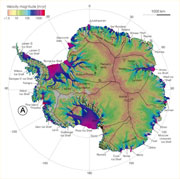 JAXA provided data acquired by the DAICHI’s onboard synthetic aperture radar for creating the world’s first ice flow speed map of Antarctica that has been compiled by the NASA Jet Propulsion Laboratory and the University of California, Irvine, utilizing data acquired through multiple numbers of synthetic aperture radars. Other organizations including the Canadian Space Agency and the European Space Agency also supply data. As a result, the ice flow speed distribution map for Antarctica was composed based on calculations using data obtained at different times by various satellites. The map will be beneficial for tracking climate changes and future forecasts of rising ocean surfaces.
JAXA provided data acquired by the DAICHI’s onboard synthetic aperture radar for creating the world’s first ice flow speed map of Antarctica that has been compiled by the NASA Jet Propulsion Laboratory and the University of California, Irvine, utilizing data acquired through multiple numbers of synthetic aperture radars. Other organizations including the Canadian Space Agency and the European Space Agency also supply data. As a result, the ice flow speed distribution map for Antarctica was composed based on calculations using data obtained at different times by various satellites. The map will be beneficial for tracking climate changes and future forecasts of rising ocean surfaces.
* DAICHI’s operation was completed on May 12, 2011.
August 12, 2011 Updated
Please enjoy your summer vacation at JAXA facilities!
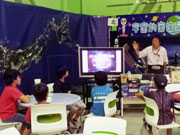 JAXA is preparing various events that both adults and children can enjoy. At the Tsukuba Space Center, we will hold a Summer Double Event every day with a panel exhibition and a Summer lab event (photo), which supports research and craft projects for elementary school children to complete their homework, during the summer vacation period (till August 31, Wed.)
JAXA is preparing various events that both adults and children can enjoy. At the Tsukuba Space Center, we will hold a Summer Double Event every day with a panel exhibition and a Summer lab event (photo), which supports research and craft projects for elementary school children to complete their homework, during the summer vacation period (till August 31, Wed.)
At the Tanegashima Space Center, we will perform a science show between the 15th (Mon.) and the 17th (Wed.). Let's learn the circulation and characteristics of water.
On Aug. 20 (Sat.,) an open-house event will be held at the Katsuura Tracking and Communication Station. We are preparing various events including a quiz rally and a test to become an astronaut. Other JAXA facilities are also accepting visitor tours. Please come and enjoy our facilities!
July 2011
July 26, 2011 Updated
Three astronaut candidates certified as ISS astronauts!
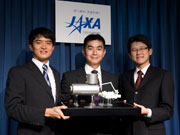 The Japan Aerospace Exploration Agency has been providing basic training to be certified as an astronaut for the International Space Station (ISS) to astronaut candidates Kimiya Yui, and Takuya Ohnishi since April 2009, and also to astronaut candidate Norishige Kanai since September 2009. The three candidates have completed all their basic training requirements, thus they were certified as ISS astronauts on July 25, 2011.
The Japan Aerospace Exploration Agency has been providing basic training to be certified as an astronaut for the International Space Station (ISS) to astronaut candidates Kimiya Yui, and Takuya Ohnishi since April 2009, and also to astronaut candidate Norishige Kanai since September 2009. The three candidates have completed all their basic training requirements, thus they were certified as ISS astronauts on July 25, 2011.
The three will further participate in training to improve their knowledge and techniques as astronauts mainly at the NASA Johnson Space Center as well as in Japan and other countries.
July 22, 2011 Updated
Space Shuttle Atlantis completes final flight
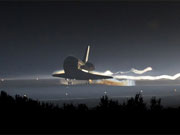 The U.S. Space Shuttle Atlantis left the International Space Station at 3:28 p.m. on July 19 (Japan standard Time) after a resupply mission, while the ISS Expedition 28 crew, including Astronaut Furukawa, saw it off by waving from the ISS.
The U.S. Space Shuttle Atlantis left the International Space Station at 3:28 p.m. on July 19 (Japan standard Time) after a resupply mission, while the ISS Expedition 28 crew, including Astronaut Furukawa, saw it off by waving from the ISS.
At 6:57 p.m. on the 21st (JST), the Atlantis landed at NASA Kennedy SpaceCenter ending the 30-year NASA Space Shuttle Mission Program with a very successful final flight.
July 14, 2011 Updated
MICHIBIKI provides all GPS supplementary signals
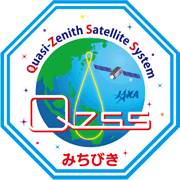 The alert flags for positioning signals of L5 and L1C for the first quasi-zenith satellite (QZS) “MICHIBIKI” were removed on July 14 as we have confirmed that their quality and reliability satisfy the QZS system user interface specifications.
The alert flags for positioning signals of L5 and L1C for the first quasi-zenith satellite (QZS) “MICHIBIKI” were removed on July 14 as we have confirmed that their quality and reliability satisfy the QZS system user interface specifications.
Along with the L1-C/A and L2C signals, whose alert flags were lifted on June 22, all alert flags for the GPS supplementary signals have now been retracted.
L5 and L1C signals are called “modernized GPS signals” because they are expected to be further improved in ranging accuracy and have less multi-path errors compared to L1-C/A and L2C signals.
July 11, 2011 Updated
Atlantis docks with the ISS
 The U.S. Space Shuttle “Atlantis” successfully docked with the International Space Station (ISS,) where Astronaut Furukawa is staying, at 0:07 a.m. on July 11 (Mon.) The Atlantis was launched from the NASA Kennedy Space Center at 0:29 a.m. on July 9 (Sat. Japan Standard Time.) The mission this time, STS-135?ULF7?, is the 37th ISS assembly and supply mission by a shuttle, and the flight is scheduled to be for 12 days. This is also the very last flight of the 30-year-old NASA Space Shuttle mission program.
The U.S. Space Shuttle “Atlantis” successfully docked with the International Space Station (ISS,) where Astronaut Furukawa is staying, at 0:07 a.m. on July 11 (Mon.) The Atlantis was launched from the NASA Kennedy Space Center at 0:29 a.m. on July 9 (Sat. Japan Standard Time.) The mission this time, STS-135?ULF7?, is the 37th ISS assembly and supply mission by a shuttle, and the flight is scheduled to be for 12 days. This is also the very last flight of the 30-year-old NASA Space Shuttle mission program.
June 2011
June 23, 2011 Updated
Astronaut Furukawa: Operations going smoothly at ISS
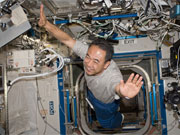 Astronaut Furukawa, who has been in the midst of his long-term stay at the International Space Station (ISS) since June 10 (Japan Standard Time), is making steady progress with his work there including daily exercises for maintaining his health, air sampling in the ISS for monitoring, and starting an experiment to make a two-dimensional nano template.
Astronaut Furukawa, who has been in the midst of his long-term stay at the International Space Station (ISS) since June 10 (Japan Standard Time), is making steady progress with his work there including daily exercises for maintaining his health, air sampling in the ISS for monitoring, and starting an experiment to make a two-dimensional nano template.
You can read about his daily life there through Twitter. Please check his “tweet” from space. JAXA is also accepting your support messages.
June 10, 2011 Updated
Astronaut Furukawa Starts ISS Expedition Mission
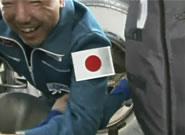 The Soyuz spacecraft (27S/TMA-02M) carrying Astronaut Satoshi Furukawa, was launched at 5:12 a.m. on June 8 (Wed., Japan Standard Time, all the following dates and time are JST) and docked with the International Space Station (ISS) at 6:18 a.m. on June 10 (Fri.) As the Soyuz crewmembers entered the ISS at 9:34 a.m. on the same day, Astronaut Furukawa began his long-term stay. He is the third Japanese to stay at the ISS for a prolonged period of time, and he plays the role of a flight engineer for the 28th and 29th expeditions for about five and half months. He will conduct scientific experiments and ISS operations and maintenance.
The Soyuz spacecraft (27S/TMA-02M) carrying Astronaut Satoshi Furukawa, was launched at 5:12 a.m. on June 8 (Wed., Japan Standard Time, all the following dates and time are JST) and docked with the International Space Station (ISS) at 6:18 a.m. on June 10 (Fri.) As the Soyuz crewmembers entered the ISS at 9:34 a.m. on the same day, Astronaut Furukawa began his long-term stay. He is the third Japanese to stay at the ISS for a prolonged period of time, and he plays the role of a flight engineer for the 28th and 29th expeditions for about five and half months. He will conduct scientific experiments and ISS operations and maintenance.
Please pay attention to his activities in space. We are accepting support messages!
June 8, 2011 Updated
Soyuz carrying Astronaut Furukawa successfully takes off for space
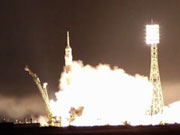 The Soyuz spacecraft (27S/TMA-02M), which Astronaut Satoshi Furukawa is aboard, was successfully launched from the Baikonur Cosmodrome (in the Republic of Kazakhstan) at 5:12 a.m. on June 8 (Wed., Japan Standard Time, all the following dates and time are JST.) The Soyuz is scheduled to dock with the International Space Station (ISS) at 6:22 a.m. on June 10 (Fri.)
The Soyuz spacecraft (27S/TMA-02M), which Astronaut Satoshi Furukawa is aboard, was successfully launched from the Baikonur Cosmodrome (in the Republic of Kazakhstan) at 5:12 a.m. on June 8 (Wed., Japan Standard Time, all the following dates and time are JST.) The Soyuz is scheduled to dock with the International Space Station (ISS) at 6:22 a.m. on June 10 (Fri.)
JAXA will broadcast a live report showing Astronaut Furukawa and his Soyuz crew mates entering the ISS at around 9:00 a.m. on June 10. Don't miss watching the scene! (Photo by NASA TV)
May 2011
May 30, 2011 Updated
Send support messages to Astronaut Furukawa!
 The Soyuz spacecraft which Astronaut Satoshi Furukawa will be onboard will be launched next week (scheduled on June 8.) JAXA is accepting support messages to Astronaut Furukawa, who is heading for the International Space Station (ISS) as an expedition 28/29 crewmember.
The Soyuz spacecraft which Astronaut Satoshi Furukawa will be onboard will be launched next week (scheduled on June 8.) JAXA is accepting support messages to Astronaut Furukawa, who is heading for the International Space Station (ISS) as an expedition 28/29 crewmember.
In addition to our live broadcast of the Soyuz launch and arrival at the ISS, we are seeking groups who are willing to participate in the scheduled dialogue exchange event with Astronaut Furukawa from the Japanese Experiment Module “Kibo” named “Life with gravity.” Your participation is welcome.
May 19, 2011 Updated
Astronaut Furukawa to leave for space on Soyuz on June 8!
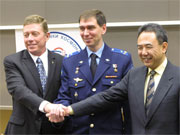 The Russian Federal Space Agency (FSA) has set the launch date and time of the Soyuz spacecraft (27S/TMA-02M,) which Astronaut Satoshi Furukawa will be aboard, at 5:15 a.m. on June 8 (Japan Standard Time) from the Baikonur Cosmodrome (the Republic of Kazakhstan.)
The Russian Federal Space Agency (FSA) has set the launch date and time of the Soyuz spacecraft (27S/TMA-02M,) which Astronaut Satoshi Furukawa will be aboard, at 5:15 a.m. on June 8 (Japan Standard Time) from the Baikonur Cosmodrome (the Republic of Kazakhstan.)
Astronaut Furukawa is scheduled to stay at the International Space Station (ISS) for about five and half months as a flight engineer for the 28th and 29th expedition crews. He will engage in scientific experiments and other programs that have been selected through public proposals including “zero-gravity experiments” and “challenges to space medicine.”
JAXA will broadcast live reports of Astronaut Furukawa’s launch and arrival at the ISS. We are currently looking for organizations that can cooperate in live broadcast distribution, and accepting supportive messages to the astronauts. Your cooperation and support are appreciated.
Photo (JAXA/GCTC)
May 12, 2011 Updated
DAICHI operations completed
 JAXA had been trying to communicate with the Advanced Land Observing Satellite “DAICHI” (ALOS) for about three weeks after its power generation anomaly on April 22, but we decided to complete its operations by sending a command from the ground to halt its onboard transmitter and batteries at 10:50 a.m. on May 12 (Japan Standard Time) as we found it was impossible to recover communication with the satellite.
JAXA had been trying to communicate with the Advanced Land Observing Satellite “DAICHI” (ALOS) for about three weeks after its power generation anomaly on April 22, but we decided to complete its operations by sending a command from the ground to halt its onboard transmitter and batteries at 10:50 a.m. on May 12 (Japan Standard Time) as we found it was impossible to recover communication with the satellite.
DAICHI, launched on January 24, 2006 (JST), had been operated for over five years, which was its target life and well beyond its design life of three years, and it achieved many fruitful results related to emergency observations on disaster-stricken areas and earth observations. JAXA continues to investigate the causes of the power generation anomaly.
April 2011
April 22, 2011 Updated
Spring open-house events at JAXA facilities
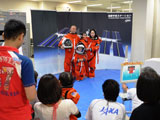 JAXA usually holds open-house events at our facilities every spring as a commemorative event for Science and Technology Week in April. However, due to the earthquake in March, we have cancelled or postponed the events at some facilities, but plan to have open-house events as usual at other facilities.
JAXA usually holds open-house events at our facilities every spring as a commemorative event for Science and Technology Week in April. However, due to the earthquake in March, we have cancelled or postponed the events at some facilities, but plan to have open-house events as usual at other facilities.
Each facility is preparing various events including "GPS treasure hunting" at the Okinawa Tracking and Communication Station and a "Backyard tour" at the Tanegashima Space Center. Please come and join us. We are waiting for your visit!
April 14, 2011 Updated
50th anniversary of the first manned space flight
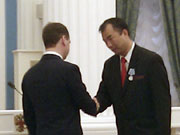 This year marks the 50th anniversary since Cosmonaut Yuri Gagarin (from the former Soviet Union) achieved the first manned space flight on April 12, 1961. An award ceremony for medals of honor was held at the Kremlin, Moscow, on April 12 to recognize astronauts who have made significant achievements and contributions to manned space development. Fourteen astronauts including JAXA Astronaut Soichi Noguchi attended the ceremony and received a medal from President Medvedev of Russia. Astronaut Wakata was also selected as the winner of a medal.
This year marks the 50th anniversary since Cosmonaut Yuri Gagarin (from the former Soviet Union) achieved the first manned space flight on April 12, 1961. An award ceremony for medals of honor was held at the Kremlin, Moscow, on April 12 to recognize astronauts who have made significant achievements and contributions to manned space development. Fourteen astronauts including JAXA Astronaut Soichi Noguchi attended the ceremony and received a medal from President Medvedev of Russia. Astronaut Wakata was also selected as the winner of a medal.
JAXA is holding a special event under the theme of manned space development in the former Soviet Union and Russia at the Tsukuba Space Center from April 12 to mid July in order to commemorate the 50th anniversary. Please come and join us!
March 2011
March 30, 2011 Updated
KOUNOTORI2 re-entered the atmosphere to complete its mission!
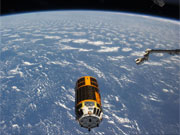 The KOUNOTORI2 (HTV2, a cargo transporter to the International Space Station,) which left the ISS at around 0:46 a.m. on March 29 (Japan Standard Time,) re-entered the atmosphere at around 12:09 p.m. on March 30 (JST.)
The KOUNOTORI2 (HTV2, a cargo transporter to the International Space Station,) which left the ISS at around 0:46 a.m. on March 29 (Japan Standard Time,) re-entered the atmosphere at around 12:09 p.m. on March 30 (JST.)
The KOUNOTORI2 successfully completed its role to transport materials to the ISS, then re-entered the Earth’s atmosphere to complete its mission of approximately 67 days.
Thank you very much for supporting the KOUNOTORI2 and H-IIB Launch Vehicle No.2 missions.
March 24, 2011 Updated
JAXA supports disaster measures following Tohoku Region Pacific Ocean Coastal Earthquake
 Japan now faces unprecedented damage in a broad area not only due to the Tohoku Region Pacific Ocean Coastal Earthquake but also from the following huge tsunami tidal wave. JAXA has been actively engaging in support activities for disaster-stricken areas. We are carrying out emergency observations of the regions using the Advanced Earth Observing Satellite"DAICHI" and providing analyzed data to the government in cooperation with other international organizations. The Wideband Internetworking Engineering Test and Demonstration Satellite "KIZUNA" (WINDS) and the Engineering Test Satellite VIII "KIKU No. 8" (ETX-VIII) are also being utilized to establish a communication environment to support disaster measures. At the International Space Station, astronauts took images of the disaster-stricken areas.
Japan now faces unprecedented damage in a broad area not only due to the Tohoku Region Pacific Ocean Coastal Earthquake but also from the following huge tsunami tidal wave. JAXA has been actively engaging in support activities for disaster-stricken areas. We are carrying out emergency observations of the regions using the Advanced Earth Observing Satellite"DAICHI" and providing analyzed data to the government in cooperation with other international organizations. The Wideband Internetworking Engineering Test and Demonstration Satellite "KIZUNA" (WINDS) and the Engineering Test Satellite VIII "KIKU No. 8" (ETX-VIII) are also being utilized to establish a communication environment to support disaster measures. At the International Space Station, astronauts took images of the disaster-stricken areas.
JAXA would like to express our deepest sympathy to those who are suffering from the Tohoku Region Pacific Ocean Coastal Earthquake.
March 13, 2011 Updated
DAICHI's emergency observation after Tohoku Region Pacific Ocean Coastal Earthquake
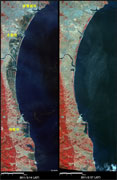 At around 2:46 p.m. on March 11, a gigantic earthquake of an estimated Magnitude of 9.0 hit the coastal area of the Tohoku (north-eastern) region. It is the largest earthquake since Japan began keeping records. An extremely strong temblor was experienced in a vast area, and aftershocks still continue. The huge tsunami triggered by the earthquake left devastating damages in coastal areas.
At around 2:46 p.m. on March 11, a gigantic earthquake of an estimated Magnitude of 9.0 hit the coastal area of the Tohoku (north-eastern) region. It is the largest earthquake since Japan began keeping records. An extremely strong temblor was experienced in a vast area, and aftershocks still continue. The huge tsunami triggered by the earthquake left devastating damages in coastal areas.
JAXA's Advanced Land Observing Satellite "DAICHI" conducted an emergency observation on disaster-stricken areas. We will keep the observation.
March 9, 2011 Updated
KOUNOTORI2 to return to earth-facing port from March 10
 The KOUNOTORI2 (HTV2, a cargo transporter to the International Space Station), will move back to the earth-facing port of the Harmony (Node 2) from its zenith port now that the Space Shuttle Discovery left the ISS to go home on March 7 (Japan Standard Time.) The relocation is scheduled to be performed on the 10th and 11th (JST.) More cargo will be taken out of the KOUNOTORI2, then, after being packed with used materials, the KOUNOTORI2 will re-enter the atmosphere.
The KOUNOTORI2 (HTV2, a cargo transporter to the International Space Station), will move back to the earth-facing port of the Harmony (Node 2) from its zenith port now that the Space Shuttle Discovery left the ISS to go home on March 7 (Japan Standard Time.) The relocation is scheduled to be performed on the 10th and 11th (JST.) More cargo will be taken out of the KOUNOTORI2, then, after being packed with used materials, the KOUNOTORI2 will re-enter the atmosphere.
(Photo by NASA)
February 2011
February 28, 2011 Updated
All spacecraft transporters get together at ISS
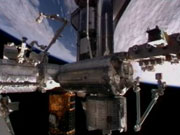 On Feb. 27 (Japan Standard Time), the Space Shuttle Discovery of the United States docked with the International Space Station (ISS). As the KOUNOTORI2, a JAXA cargo transporter to the ISS, the European cargo transporter, ATV2, the Russian Progress cargo transporter and Soyuz were already at the ISS, the Discovery arrival marks for the first time that all the manned and unmanned space vehicles which are currently in operation from ISS participating countries in the world are at the ISS (Image by NASA TV)
On Feb. 27 (Japan Standard Time), the Space Shuttle Discovery of the United States docked with the International Space Station (ISS). As the KOUNOTORI2, a JAXA cargo transporter to the ISS, the European cargo transporter, ATV2, the Russian Progress cargo transporter and Soyuz were already at the ISS, the Discovery arrival marks for the first time that all the manned and unmanned space vehicles which are currently in operation from ISS participating countries in the world are at the ISS (Image by NASA TV)
February 21, 2011 Updated
KOUNOTORI2 relocation to the zenith port completed
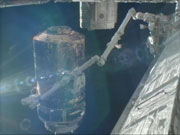 As part of preparations for the Space Shuttle Discovery’ s docking with the International Space Station (ISS,) the KOUNOTORI2 , or the HTV2, a cargo transporter to the ISS, was moved from the earth-facing port of the Harmony (Node 2) to its zenith port. This was the first time to perform such a relocation. The KOUNOTORI2 was successfully transported at 1:45 a.m. on Feb. 19 (Japan Standard Time,) and the electric cables were connected with the Harmony at 4:26 a.m. (JST) to complete its relocation.
As part of preparations for the Space Shuttle Discovery’ s docking with the International Space Station (ISS,) the KOUNOTORI2 , or the HTV2, a cargo transporter to the ISS, was moved from the earth-facing port of the Harmony (Node 2) to its zenith port. This was the first time to perform such a relocation. The KOUNOTORI2 was successfully transported at 1:45 a.m. on Feb. 19 (Japan Standard Time,) and the electric cables were connected with the Harmony at 4:26 a.m. (JST) to complete its relocation.
February 17, 2011 Updated
Astronaut Wakata selected for ISS expedition!
His fourth space trip
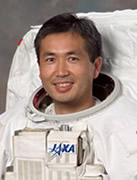 Astronaut Koichi Wakata has been selected as a crewmember for the 38th/39th Expedition Mission to the International Space Station (ISS).
Astronaut Koichi Wakata has been selected as a crewmember for the 38th/39th Expedition Mission to the International Space Station (ISS).
He is slated to fly to the ISS by Soyuz at the end of 2013 and stay there for about six months.
During the first four months of the 38th Expedition Mission, he will be in charge of ISS operations as a flight engineer, science experiments using the space environment, and system operations for ISS facilities including the Japanese Experiment Module "Kibo." For the 39th Expedition Mission (about two months), he will be the first Japanese ISS commander in addition to the above duties.
February 8, 2011 Updated
Exposed Pallet stored on the KOUNOTORI2
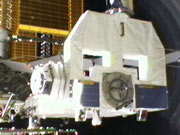 On February 4 (Japan Standard Time,) cargo on the Exposed Pallet (EP) of the KOUNOTORI2, or the HTV2, a cargo transporter to the International Space Station (ISS,) was moved to the Enhanced Orbital replacement Unit Temporary Platform.
On February 4 (Japan Standard Time,) cargo on the Exposed Pallet (EP) of the KOUNOTORI2, or the HTV2, a cargo transporter to the International Space Station (ISS,) was moved to the Enhanced Orbital replacement Unit Temporary Platform.
Then, on Feb. 7 (JST,) the EP was stored back in the KOUNOTORI2's Unpressurized Logistic Carrier.
The ISS astronauts will remove cargo from the KOUNOTORI's Pressurized Logistic Carrier, and the KOUNOTORI2 will be moved to a different port to be ready for the docking of the Space Shuttle with the ISS.
February 2, 2011 Updated
KOUNOTORI2's Exposed Pallet attached to Kibo's Exposed Facility
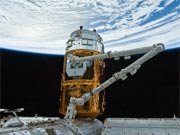 On February 1, the Exposed Pallet (EP) was removed from the Unpressurized Logistic Carrier of the KOUNOTORI2, or the HTV2, a cargo transporter to the International Space Station (ISS,) by the ISS robotic arm (SSRMS) at 5:54 p.m.
On February 1, the Exposed Pallet (EP) was removed from the Unpressurized Logistic Carrier of the KOUNOTORI2, or the HTV2, a cargo transporter to the International Space Station (ISS,) by the ISS robotic arm (SSRMS) at 5:54 p.m.
Then, at 8:57 p.m., the EP was installed onto the Exposed Facility of the ISS's Japanese Experiment Module "Kibo." Cargo on the EP, including NASA's cargo, a Cargo Transport Container (CTC,) and Flex Hose Rotary Couplers (FHRC,) will be moved to the ISS's exposed cargo storage area using the ISS's Special Purpose Dexterous Manipulator "Dextre." The emptied EP will be transported back to the KOUNOTORI2.
February 1, 2011 Updated
Third issue of JAXA's English magazine "JAXA TODAY" published
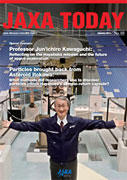 JAXA issued the third "JAXA TODAY," which is an English magazine to dispatch our latest information and activities to foreign countries.
JAXA issued the third "JAXA TODAY," which is an English magazine to dispatch our latest information and activities to foreign countries.
In this latest issue, we feature an interview with Professor Junichiro Kawaguchi, the project manager of the Asteroid Explorer "HAYABUSA," a story on particles brought back by HAYABUSA from the asteroid Itokawa, Astronaut Souichi Noguchi's life in space for 163 days, and achievements with the Japanese Experiment Module "Kibo."
You can download the magazine from the JAXA website. Please keep an eye on JAXA Today!
January 2011
January 28, 2011 Updated
KOUNOTORI2 berthing at ISS
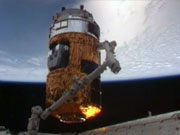 The KOUNOTORI2, or the HTV2, a cargo transporter to the International Space Station (ISS) launched by the H-IIB Launch Vehicle No.2, was captured by the ISS robotic arm at around 8:41 p.m. on January 27 (Japan Standard Time,) and, at around 3:34 a.m. on the 28th (JST,) the KOUNOTORI berthed at the ISS. Cargo in the Pressurized Section will be transported to the ISS by the ISS astronauts followed by cargo in unpressurized areas.
The KOUNOTORI2, or the HTV2, a cargo transporter to the International Space Station (ISS) launched by the H-IIB Launch Vehicle No.2, was captured by the ISS robotic arm at around 8:41 p.m. on January 27 (Japan Standard Time,) and, at around 3:34 a.m. on the 28th (JST,) the KOUNOTORI berthed at the ISS. Cargo in the Pressurized Section will be transported to the ISS by the ISS astronauts followed by cargo in unpressurized areas.
January 25, 2011 Updated
KOUNOTORI2 final approach to the ISS
Live broadcast will start at 7:50 p.m. on the 27th (JST)
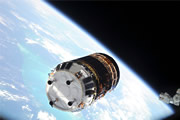 The KOUNOTORI2 (HTV2, a cargo transporter to the ISS), which was launched by the H-IIB Launch Vehicle No. 2 at 2:37:57 p.m. on January 22 (Sat.,) 2011 (Japan Standard Time), has been flying smoothly, and it is gradually approaching the International Space Station (ISS) through an altitude control maneuver.
The KOUNOTORI2 (HTV2, a cargo transporter to the ISS), which was launched by the H-IIB Launch Vehicle No. 2 at 2:37:57 p.m. on January 22 (Sat.,) 2011 (Japan Standard Time), has been flying smoothly, and it is gradually approaching the International Space Station (ISS) through an altitude control maneuver.
The KOUNOTORI2 is slated for berthing at the ISS on January 28 (Fri., JST.) We will broadcast a live report of capturing the KOUNOTORI2 by the ISS robotic arm from 7:50 p.m. on the 27th (JST), and the berthing of the KOUNOTORI at the ISS from 10:45 p.m. on the same day. You can enjoy our live reports at some public viewing sites as well as through cable TV and websites. Please watch them.
January 22, 2011 Updated
KOUNOTORI2/H-IIB F2 successfully launched
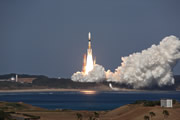 The H-IIB Launch Vehicle No. 2 with the KOUNOTORI2 (HTV2, a cargo transporter to the International Space Station, ISS) onboard was launched from the Tanegashima Space Center at 2:37:57 p.m. on January 22 (Sat., Japan Standard Time.) The launch vehicle flew smoothly, and, at about 15 minutes and 13 seconds after liftoff, the separation of the KOUNOTORI2 was confirmed.
The H-IIB Launch Vehicle No. 2 with the KOUNOTORI2 (HTV2, a cargo transporter to the International Space Station, ISS) onboard was launched from the Tanegashima Space Center at 2:37:57 p.m. on January 22 (Sat., Japan Standard Time.) The launch vehicle flew smoothly, and, at about 15 minutes and 13 seconds after liftoff, the separation of the KOUNOTORI2 was confirmed.
The KOUNOTORI2 will fly to the ISS, then, on Jan. 28 (Fri., JST,) it is slated for berthing with the ISS.
January 20, 2011 Updated
New launch date and time of KOUNOTORI2/H-IIB F2 decided
Live launch report starts at 1:30 p.m. on Jan. 22
 The new launch date and time of the H-IIB Launch Vehicle No. 2 with the KOUNOTORI2 (a cargo transporter to the International Space Station) onboard were set at 2:37:57 p.m. on January 22 (Sat., Japan Standard Time.) The launch was originally scheduled for January 20 (JST.)
The new launch date and time of the H-IIB Launch Vehicle No. 2 with the KOUNOTORI2 (a cargo transporter to the International Space Station) onboard were set at 2:37:57 p.m. on January 22 (Sat., Japan Standard Time.) The launch was originally scheduled for January 20 (JST.)
We will broadcast the live launch report from 1:30 p.m. on the 22th (JST.) You can watch it at some public viewing sites such as JAXA offices and science museums as well as through cable TV and some websites. Please join us!
January 19, 2011 Updated
KOUNOTORI2/H-IIB F2 launch delay
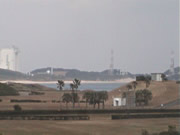 The launch of the H-IIB Launch Vehicle No. 2 with the KOUNOTORI2 (HTV2, a cargo transporter to the International Space Station) has been postponed as unfavorable weather is forecast around the launch time. The new launch day will be no earlier than January 22 (Sat.,) 2011 (Japan Standard Time, JST).
The launch of the H-IIB Launch Vehicle No. 2 with the KOUNOTORI2 (HTV2, a cargo transporter to the International Space Station) has been postponed as unfavorable weather is forecast around the launch time. The new launch day will be no earlier than January 22 (Sat.,) 2011 (Japan Standard Time, JST).
The launch was originally scheduled for 3:29:19 p.m. on January 20 (Thur.,) 2011 (JST.)
We will announce the new launch day and time as soon as it is decided.
January 18, 2011 Updated
Launch time of KOUNOTORI2/H-IIB F2 decided Live launch report starts at 2:30 p.m. on Jan. 20
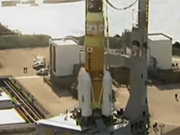 The launch time of the H-IIB Launch Vehicle No. 2 with the KOUNOTORI2 (a cargo transporter to the International Space Station) onboard was set at 3:29:19 p.m. on January 20 (Thur., Japan Standard Time.)
The launch time of the H-IIB Launch Vehicle No. 2 with the KOUNOTORI2 (a cargo transporter to the International Space Station) onboard was set at 3:29:19 p.m. on January 20 (Thur., Japan Standard Time.)
We will broadcast the live launch report from 2:30 p.m. on the 20th (JST.) You can watch it at some public viewing sites such as JAXA offices and science museums as well as through cable TV and some websites. Please join us!
January 13, 2011 Updated
KOUNOTORI2/H-IIB F2 live launch broadcast starts at 2:30 p.m. on Jan. 20!
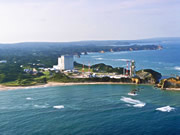 JAXA will broadcast a live launch report of the KOUNOTORI2/H-IIB Launch Vehicle No.2 from 2:30 p.m. on January 20 (Thur.)
JAXA will broadcast a live launch report of the KOUNOTORI2/H-IIB Launch Vehicle No.2 from 2:30 p.m. on January 20 (Thur.)
You can watch the live report at public viewing sites including JAXA offices and science museums as well as through cable TV and some websites.
Why don't you watch the live launch with us?
January 12, 2011 Updated
Nickname decided for Jet Flying Test Bed
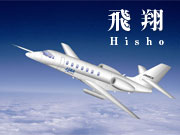 "Hisho," meaning "flying" or "soaring," was selected as the nickname of the Jet Flying Test Bed as a result of the about two-month long nickname campaign held in autumn 2010. We received 3,928 entries, of which the largest number of people named the device "Hisho." Many people pointed out that an image evoked by this word fits the aircraft including "flying in the sky with wings," "flying beautifully," and also figuratively meaning "moving toward the future."
"Hisho," meaning "flying" or "soaring," was selected as the nickname of the Jet Flying Test Bed as a result of the about two-month long nickname campaign held in autumn 2010. We received 3,928 entries, of which the largest number of people named the device "Hisho." Many people pointed out that an image evoked by this word fits the aircraft including "flying in the sky with wings," "flying beautifully," and also figuratively meaning "moving toward the future."
The Hisho is a small jet aircraft for aviation technology experiments with measurement devices necessary for flight tests onboard. It will be utilized for the evolution of next generation aviation science technology, the development of domestic passenger jet aircraft, and flight verification of advanced technology.